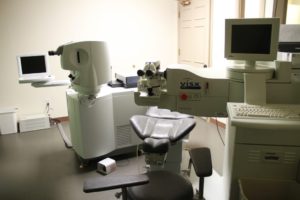
Ask about the different types of LASIK surgery in your consultation.
LASIK is one of the best decisions you can make to improve your vision. However, if you’ve ever researched the decision, you’ve probably come across the several different types. It’s important to know the differences between them to help you choose the best option. We’re here to highlight the types of LASIK surgery.
PRK
While a PRK uses similar tools as LASIK, the surgeon foregoes creating a flap. The entire outer layer of the cornea is completely removed. An excimer laser reshapes the corneal tissue, and a new outer layer grows back within five days after the procedure.
LASIK (With An “I”)
LASIK is the most common form of laser eye surgery. A surgical laser creates a small “flap” on the surface of the eye. The flap is folded back in order to reshape the corneal tissue. After the cornea is adjusted, the flap is replaced in its original position, where it acts as a natural bandage that allows the eye to heal. Due to quick healing time, the flap reattaches itself securely, so there is no need for sutures.
LASEK (With An “E”)
The LASEK procedure is a combination of LASIK and PRK. Instead of completely removing the outer layer of the cornea like the PRK, the flap is pushed to the side so it remains attached to the eye on one side. This process exposes the corneal tissue for laser reshaping. After this step is completed, the outer layer is adjusted and a “bandage” contact lens is placed on the eye to keep the layer secured during the healing process.
Epi-LASIK
LASEK and Epi-LASIK are incredibly similar. However, the key difference is simply the type of tool used to loosen the outer layer of the cornea. This reduces the patient’s risk of a reaction caused by using alcohol, which is used in LASEK.
While this is a quick and simplified version of each of the types of LASIK surgeries, we recommend setting up a complimentary consultation for a more in-depth discussion. Each of these surgeries have high success rates and similar vision outcomes. It’s genuinely about what works best for you. During your consultation, our spets can help to determine which laser eye surgery is right for you.

